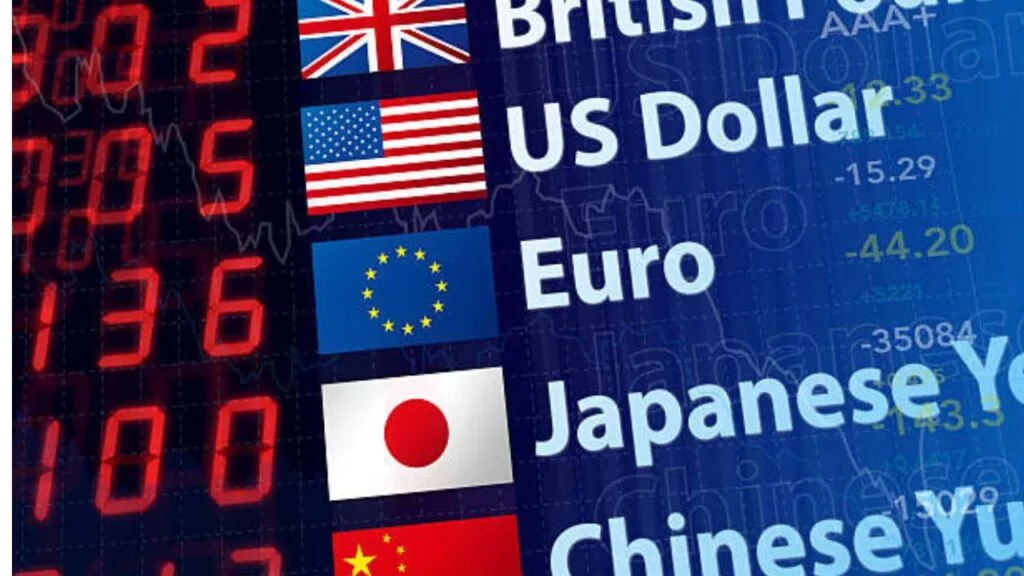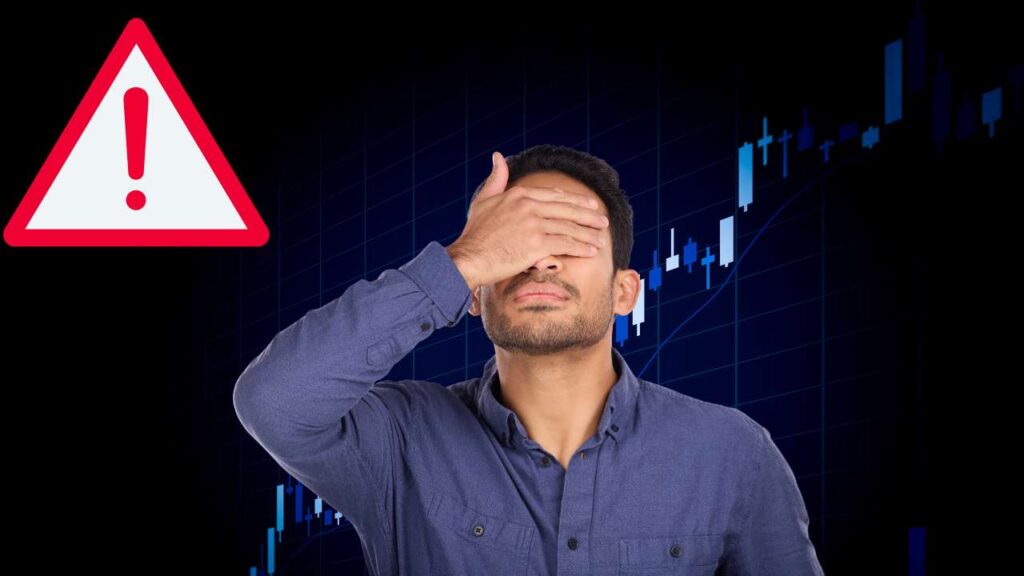
1.1. What is Forex Trading?
Forex trading is short for foreign exchange trading, which involves buying and selling currencies on the global market. It’s similar to traveling abroad and exchanging your currency, but on much larger scale. Let’s say you are visiting the US, and you change your Indian Rupees for US Dollars. Now, that’s a very basic version of forex trading!
A. The Size of the Global Forex Market and Its Opportunities
The forex market is huge! It is the biggest financial market globally, with trillions of dollars changing hands each day. The sheer size of it means that there are always opportunities available to traders. It is like a 24×5 crowded where the shops never closes.
B. Pros and Cons of Forex Trading
Trading forex can be fun and lucrative, but it also carries its share of risks. The good news is you can trade with smaller amounts of money, trade at any time of day, and potentially make money when markets go up and down. But the forex market is volatile, and there is always risk that can lead to loss of your money. It’s kind of like surfing, thrilling when you catch the right wave, but you have to be ready for the occasional wipeout.
2. When you have data upto October 2023.
A. Economic and Regulatory Architecture: RBI & SEBI
In India, there are two primary regulatory authorities that oversee forex trading: the Reserve Bank of India (RBI) and the Securities and Exchange Board of India (SEBI). They’re like umpires at a cricket match, ensuring everyone plays by the rules.
B. India Forex Trading: Legal Considerations
There are some legal restrictions on forex trading in India. For instance, not all currency pairs can be traded freely for Indian residents. It’s sort of like going a restaurant with virtual owners and very limited menu — the meal can still be good, but without much option.
C. Which Currency Pairs Can Indian Traders Access?
India FX is an over-the-counter market for Indian traders, including ones with currency pairs with the Indian Rupee and some major global currencies. You end up with something between a menu and an epicurean world tour.
3. How to Start Trading Forex in India

A. Setting Up a Trading Account
To begin forex trading, you have to open a trading account with a broker. The process is very similar to opening a bank account, just this time you are opening one for currencies.
B. How to Choose a Forex Broker Trustworthy
Choosing a reputable broker is vital. Check for regulations, customer support, and a friendlier platform. It’s like picking a good gym — you want one that’s reputable, one that’s going to help you, but one that has the right machines for your body type.”
C. Forex Trading: The Essential Tools and Platforms
Fintech has also changed the way we trade currencies. Among these are charting software, economic calendars, and news feeds. Familiarizing yourself with these tools is like learning how the equipment in the gym we talked about works – it takes time, but is key to your success.
4. You have to make one of the most common mistakes that people do- Fundamental Analysis in Forex Trading

A. Economics and Its Influence
Economic indicators are to an economy what vital signs are to a body. Economic data like GDP, inflation, and job numbers can impact a currency. Reading these indicators is a map that helps you find your way in the forex world.
B. Market Reaction and Currency Moves
Currency movement can be greatly affected by world events. Elections, trade agreements and natural disasters can push currencies higher or lower. You help me the way the weather can help me plan my picnic, but not predict my picnic.
C. How to Utilize News & Reports to Guide Your Trades
Forex trading requires staying on top of the financial news and reports. It’s similar to having an ear to the ground in your own marketplace — the more information you have, the more sound decisions you can make.
5. Technical Analysis of Forex Traders
A. The Timeframes and Charts Explained
Technical analysis: Charts (your bread and butter). They illustrate the movement in currency prices over time. You can get different perspectives depending on the time frame you look at (for example, hourly, daily, or weekly charts). It’s similar to viewing a landscape – a bird’s eye perspective highlights the general landscape, while zooming closer reveals the small details.
B. Technical Indicators is one of the most important market analysis tools.
These are mainly tools used to forecast potential future price movements relative to past data. Some examples of popular technical indicators are moving averages, relative strength index (RSI), and Bollinger Bands. Using these is like learning to read the signs on a trail – they can help guide your trading decisions.
C. Spotting Trends and Patterns
Price action in forex markets invariably follows trends, and we see certain patterns repeating. Most importantly, these can help you make informed trading decisions. – Its like realizing it usually rains in the afternoon in monsoon season – knowing this helps you when planning.
6. Forex Trading Strategy Development
A. 028: Trading Goals and Risk Tolerance
Having a plan in place of what you hope to accomplish and how much risk you are willing to take is essential to completing a successful trade. Are you in it for quick, small gains, or are you in it for the long run? From how much are you risking per trade? These are personal choices, much like how spicy you want your food to be – it comes down to imprints of your senses and their thresholds.
B. How to develop and backtest a trading plan
A solid trading plan should highlight your strategy, including when to enter and exit trades, position size, and the currency pairs you want to trade. It’s essentially similar to a recipe for your favourite dish – it guides you throughout the process and ensures constant results.
C. Popular Forex Trading Strategies for the Beginners
Beginners can get started with a plethora of strategies — trend trading, range trading, breakout trading, and so on. They each have their own method, as if there are different methods of cooking. You may have to experiment with a couple of types to figure out which one works best for you.
7. The Importance Of Risk Management In Forex Trading
A. Why Stop-Loss and Take-Profit Orders Are Crucial
A stop-loss order will automatically close your trade if the price goes against you by a specified amount, while a take-profit will close it once you have achieved the profit you want. They’re like the safety nets in a circus act — they keep you from being hurt if the unexpected happens.
B. Managing Position Sizes and Leverage
Position sizing (how much the trader buys in each trade) and leverage (how much borrowed money the trader uses) are critical in risk management. Like choosing how many eggs to put into which basket, you want to maximize your potential gain and minimize your risk of loss.
C. The Importance of Emotional Control and Discipline in Trading
When trading, emotions get us to make rash decisions. The discipline and follow through to your trade plan remains key. It’s like being on a diet — it feels easier and more thrilling to break the promise, but discipline tends to pay off in the long run.
8. Forex Strategies: Advanced Trading Techniques
A. So what mitigation strategies could help to achieve this?
Scalping is the practice of making a number of small trades across a single day, while day trading encompasses opening and closing a position on the same day. These tactics are fast-moving – as with a marathon sprint, they need to be applied quickly and are demanding.
B. What is swing trading and position trading?
Swing trading typically holds positions for several days to exploit price ‘swings.’ Position trading is even more long-term-scaled, with trades sometimes held up to weeks or months. It’s like running a marathon — it’s all about patience and a good feel of the broader market trends.
C. Your Expertise Up to October 2023
And then there are those who use an automated trading platform or an ’expert advisor’ to make trades for them according to predetermined rules. It’s like a rice cooker — you set it, and it does the work for you. However, you must be conscious of how it operates in order to make the most of it.
9. How to Deal with the Tax Implications of Forex Trading in India
A. Tax Obligations for Forex Traders: A Guide to Tax Regulations
In India, profits from Forex trading are taxed. The precise tax treatment can vary depending on how regularly you trade and whether it’s classified as a business or capital gain. It’s a bit like calculating GST on your purchases — it has to be done, but can be complicated.
B. How to Report Forex Trading Income
You must declare your forex trading income on your tax return. Track all of your trades well — it’s like keeping receipts for the expenses to your business.
C. Reaching Out For Expert Tax Advice
Due to tax laws being quite complicated, you may want to consult with a tax professional who is familiar with the rules as they apply to you as a forex trader. If you’re sick and you need the doctor – so sometimes it’s expert help – you just need to check that everything’s in order.
Summary
Forex trading in India is fun and exciting sector but it is helpful to know the risks involved as well. So if you plan on successfully trading the forex market you need to know the basics, have a good strategy, the ability to control risk, and a commitment to continuous education. Keep in mind that, successful trading is a process, not a destination. So stay curious, stay disciplined, and happy trading!
Questions And Answers (Q & A)
- Learn About Forex Trading in India: Is it Legal?
Yes, but there are some limitations. The currency pairs you can trade are those which connect the Indian Rupee with some of the major global currencies. - How much do I need to trade forex?
You can begin with a small investment, but it is best to trade only what you can afford to lose. - Can you live from forex trading?
It can be done, but requires a lot of skill, experience and capital. For the vast majority of traders, it should be a supplement to income, not the sole source. - How long does it take to learn forex trading?
It takes a couple of weeks to learn the basics but mastering it can sometimes take months; often years of practice and study. - What are the best hours to trade forex in India?
The peak times are usually times when the markets in Asia, Europe and North America overlap, which in Indian time is usually towards the afternoon .
